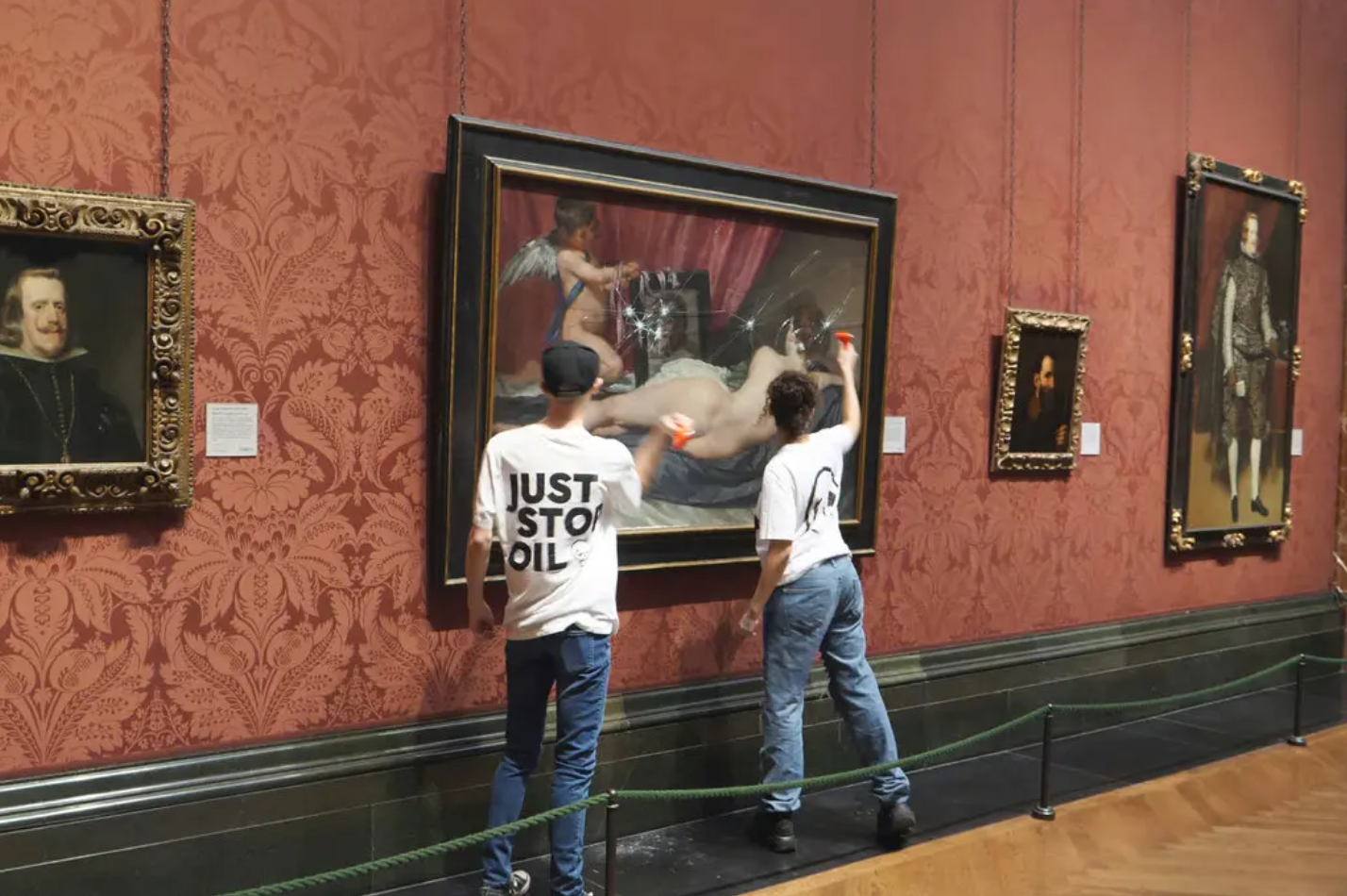La Venus del Espejo: Protest and the Value of Art
Photo Courtesy: Just Stop Oil
La Venus del Espejo - the original name, given by Velázquez, for his marvellous depiction of the bond between Aphrodite and Eros - has but one literal translation: The Venus and the Mirror. Names hold power: we acknowledge this, and therefore we look for fitting translations. Our Venus hung in Rokeby Park, County Durham, for a good part of the 19th century, and it soon became known as the Rokeby Venus. Its history became inextricably linked to that which defines it - that is, its name.
Rokeby evokes something that has nothing to do with the piece as an artistic creation: nothing to do with the idea behind it, the technique, or with Velázquez himself. However, it has become a natural part of the way we designate the artwork. This is perfectly normal, art does not exist in the void: it inhabits the world, it both affects it and is affected by it. It is just easier for us to reconcile the world influencing something as seemingly innocuous as a name, than with a woman who tore a canvas apart with a kitchen axe and a dream of freedom.
Photo Courtesy: National Portrait Gallery
The year was 1914. A suffragette by the name of Mary Richardson came into the National Gallery with two dangerous items: an axe, and a conviction. This conviction - which was bigger than her little body, than her small hands - guided her axe. She discharged seven fatal blows to the naked goddess of Beauty, and the meaning behind her stoic ruthlessness can be, now, understood by many. It served a double purpose: it gave visibility to the fight for women’s right to vote and added a new layer of meaning to the artwork. The painting became a symbol: on the same day Emily Wilding Davison threw herself under the hooves of a horse in the name of equality, Venus bled. They both became martyrs of the revolution. And only one of their bodies was sewn back together.
Art is as human a phenomenon as politics is. It comprises both meaning and symmetry, both beauty and terror. We certainly do not enjoy seeing art being put in harm’s way, as we recognise it to be our heritage and our cultural wealth. I would argue that this is precisely the power it holds: its value. And there is no denying that power can certainly be used to influence the world, and the politics within it. Last week the protest group ‘Just Stop Oil’, attempted an attack towards our long-suffering Venus, breaking the glass of the painting. Their conviction follows a desire to build a more sustainable future for humanity through stopping the usage of fossil fuels. They did no actual damage to the piece.
Now, here lies the question – let’s say they accomplish their goal. Let’s imagine that future lives are saved, that future generations are protected due to the fire of conviction they set loose. Would this serve as a justification for their actions? Is one single human life not a much more valuable heritage than any depiction of beauty on canvas? How about thousands – or millions?
Of course, these are all hypothetical, as we cannot be sure their actions will actually have these results. It is at the same time impossible to confront the value of art against that of life – they are not numeric; we are not machines. These are all just questions about the moral nature of their actions, intended simply with curiosity. We cannot ignore that there are many other ways in which the activists could make their point, without the destroyal of historical art pieces. This method has, however, been somewhat effective in the past.
What I want to highlight is that it is not possible to separate art from the world, nor dissect art history from history. It does not work like that. Seeing Rokeby Venus harmed again is clearly a painful view. What I find to be even more disheartening, however, is the amount of rage that the 1914 attack ignited - that this attack ignited, compared to the undeterred indifference with which pedestrians witnessed the shattered image of a disfigured woman, smashed under the hooves of a horse on that 1914 day. It makes me wonder where exactly lies our sense of value, and that which we hold dear.


